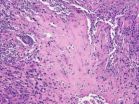(Press-News.org) WASHINGTON – A new report from the National Research Council recommends steps the Food and Drug Administration and other agencies and professional associations can take to ensure that the medical devices and health information technology used in home health care are easy and safe for laypeople to use and that caregivers, whether formal or informal, are well-trained.
For many reasons -- including the rising cost of health care, the aging of the U.S. population, and patients' desire to remain in their homes -- health care is increasingly moving from formal medical facilities into homes. A wide range of procedures, therapies, and monitoring tasks are now carried out far from any hospital or clinic, often with no health care professional on-site. So far, however, little attention has been paid to ensuring that this transition of care into the home happens safely and effectively.
The report recommends that FDA promote the development of new standards for labels on medical devices intended for use in the home, as well as for the accompanying instructional materials, to ensure that they are understandable to nonprofessionals. Standards and guidance for labeling these devices are currently lacking.
FDA also should make it easier for people to report problems with medical devices they use in the home; its current systems for reporting adverse events are not easy for laypeople to use. In addition to making these systems user-friendly, the agency should collect more data that could help identify the root causes of adverse events involving devices and should develop and promote a more convenient way for lay users and professionals to report problems.
In addition, FDA and the Office of the National Coordinator for Health Information Technology should work together to regulate, certify, and monitor applications that integrate medical devices and health information technologies -- for example, devices that monitor patients' blood pressure and provide results to patients and their doctors. The Office of the National Coordinator for Health Information Technology should also work with other agencies to establish guidelines and standards for making consumer health information technologies usable and accessible.
The way home caregivers are trained needs to be improved, the report adds. Professional practice and advocacy groups should develop certification, credentialing, and training standards that will prepare formal caregivers to practice in the home. They should develop informational and training materials for informal caregivers as well.
The report recommends that the U.S. Department of Health and Human Services, Centers for Medicare and Medicaid Services, and other federal agencies collaborate to facilitate adequate access to health- and safety-related home modifications, especially for those who cannot afford them, enabling people whose homes contain safety hazards or obstacles that limit self-care to obtain the modifications they need.
###
The study was sponsored by the Agency for Healthcare Research and Quality. The National Academy of Sciences, National Academy of Engineering, Institute of Medicine, and National Research Council make up the National Academies. They are private, nonprofit institutions that provide science, technology, and health policy advice under a congressional charter. The Research Council is the principal operating agency of the National Academy of Sciences and the National Academy of Engineering. For more information, visit http://national-academies.org. A committee roster follows.
Contacts:
Sara Frueh, Media Relations Officer
Shaquanna Shields, Media Relations Assistant
Office of News and Public Information
202-334-2138; e-mail news@nas.edu
Pre-publication copies of Health Care Comes Home: The Human Factors are available from the National Academies Press; tel. 202-334-3313 or 1-800-624-6242 or on the Internet at http://www.nap.edu. Reporters may obtain a copy from the Office of News and Public Information (contacts listed above).
NATIONAL RESEARCH COUNCIL
Division of Behavioral and Social Sciences and Education
Committee on the Role of Human Factors in Home Health Care
David H. Wegman (chair)
Professor
School of Health and Environment
University of Massachusetts
Lowell
Sara J. Czaja
Professor
Departments of Psychiatry and Behavioral
Sciences and Industrial Engineering;
Director
Center on Research and Education for Aging and Technology Enhancement; and
Co-Director
Center on Aging
Miller School of Medicine
University of Miami
Miami
K. Eric DeJonge
Director of Geriatrics
Medical House Call Program
Washington Hospital Center
Washington, D.C.
Daryle Jean Gardner-Bonneau
Principal
Bonneau & Associates; and
Adjunct Associate Professor
Western Michigan University
Portage
Michael Christopher Gibbons
Associate Director
Johns Hopkins Urban Health Institute, and
Assistant Professor of Medicine, Public Health, and Health Informatics
Johns Hopkins Medical Institutions
Baltimore
Laura N. Gitlin
Professor
School of Nursing
Johns Hopkins University
Baltimore
Judith Tabolt Matthews
Senior Research Associate, and
Associate Director
Gerontology Program
University Center for Social and Urban Research
Pittsburgh
Misha Pavel
Program Director
Smart Health and Well-being Program
National Science Foundation
Arlington, Va.
Jon Pynoos
UPS Foundation Professor of Gerontology, Policy, Planning, and Development
Davis School of Gerontology
Ethel Percy Anrus Gerontology Center
University of Southern California
Los Angeles
Robert M. Schumacher
Managing Director and Co-Owner
User Centric Inc.
Oakbrook Terrace, Ill.
Jennifer L. Wolff
Associate Professor
Department of Health Policy and Management
Johns Hopkins Bloomberg School of Public Health
Baltimore
STAFF
Mary Ellen O'Connell
Study Director
Steps needed to ensure that home medical devices are easy-to-use and caregivers are well-trained
2011-07-19
ELSE PRESS RELEASES FROM THIS DATE:
Researchers identify how a gene linked to both Alzheimer's disease and type 2 diabetes works
2011-07-19
Researchers at Mount Sinai School of Medicine have identified how a gene for a protein that can cause Type 2 diabetes, also possibly kills nerve cells in the brain, thereby contributing to Alzheimer's disease.
The gene, called SorCS1, controls the generation of amyloid-beta (Abeta) in the brain. Abeta plays a key role in the development of Alzheimer's disease. The researchers previously linked SorCS1 to Alzheimer's disease and identified where the molecules lived in the cell, but not how they control Abeta. The new data were presented today at the Alzheimer's Association's ...
MIT: The tallest tree in the land
2011-07-19
CAMBRIDGE, Mass. -- The next time you're outdoors, see if you can spot the tallest tree. If you're in the desert Southwest, this may be an easy task — trees there are few and far between, and tend to hunch low to the ground to conserve resources. In the temperate Northeast, dense forests make the exercise a bit more difficult. And in the rainy Northwest, the towering stands of sequoias often reach higher than the eye can estimate.
Knowing how tall trees can grow in any given region can give ecologists a wealth of information, from the potential density of a forest and ...
Face value
2011-07-19
CAMBRIDGE, Mass. -- The looks of political candidates are a key factor influencing voters, a phenomenon identified by a number of scholars in recent years. Now, a new study by MIT political scientists adds to this body of research by detailing which types of citizens are most influenced by candidate appearances, and why: The tendency is most prevalent among low-information voters who watch a lot of television.
Using data from the 2006 U.S. Senate and governors' races, the study shows that for every 10-point increase in the advantage a candidate has when rated by voters ...
John Theurer Cancer Center researchers shared 14 leading edge studies at recent ASCO meeting
2011-07-19
HACKENSACK, N.J. (July 18, 2011) — Researchers from the John Theurer Cancer Center at Hackensack University Medical Center presented results from 14 cancer-related studies during the recently concluded American Society of Clinical Oncology (ASCO) Annual Meeting, which took place June 3 – 7, 2011 in Chicago. The studies examined new cancer treatments, ways to predict the best treatment outcomes, and patient quality of life issues.
"ASCO is a great venue for sharing best practices and learning about new treatment approaches – we are proud to help contribute by presenting ...
Click chemistry with copper -- a biocompatible version
2011-07-19
Biomolecular imaging can reveal a great deal of information about the inner workings of cells and one of the most attractive targets for imaging are glycans – sugars that are ubiquitous to living organisms and abundant on cell surfaces. Imaging a glycan requires that it be tagged or labeled. One of the best techniques for doing this is a technique called click chemistry. The original version of click chemistry could only be used on cells in vitro, not in living organisms, because the technique involved catalysis with copper, which is toxic at high micromolar concentrations. ...
Cancer stem cells recruit normal stem cells to fuel ovarian cancer, U-M study finds
2011-07-19
ANN ARBOR, Mich. — Researchers at the University of Michigan Comprehensive Cancer Center have found that a type of normal stem cell fuels ovarian cancer by encouraging cancer stem cells to grow.
Cancer stem cells are the small number of cells in a tumor that drive its growth and spread. Traditional cancer treatments do not kill these cells, which is why cancer treatments often fail.
In a study published online in the Journal of Clinical Investigation, researchers looked in ovarian tissue at the mesenchymal stem cells, which are normal cells found throughout the body. ...
New therapy provides hope for millions of people suffering from bowel incontinence
2011-07-19
CHICAGO- A new procedure is now available for the treatment of chronic bowel incontinence, a disorder impacting the lives of more than 18 million Americans. The treatment, called InterStim® Therapy is a minimally invasive procedure which uses electrical impulses to stimulate the sacral nerve and improve muscle function. It is one of the only effective long-term treatments for bowel incontinence available to patients and Northwestern Memorial Hospital is one of the first medical centers in the country to offer the procedure.
"Bowel control problems can have a significant, ...
Research identifies genes vital to preventing childhood leukemia
2011-07-19
Researchers at The University of Western Ontario have identified genes that may be important for preventing childhood leukemia. Acute lymphoblastic leukemia (ALL) is a cancer of the blood that occurs primarily in young children. It's frequently associated with mutations or chromosomal abnormalities that arise during embryonic or fetal development. Working with mice, researchers led by Rodney DeKoter identified two key genes that appear essential in the prevention of B cell ALL, the most common form of ALL in children. The study is published online in Blood, the Journal ...
Grand Cayman blue iguana: Back from the brink of extinction
2011-07-19
While thousands of species are threatened with extinction around the globe, efforts to save the Grand Cayman blue iguana represent a rarity in conservation: a chance for complete recovery, according to health experts from the Wildlife Conservation Society's Bronx Zoo and other members of the Blue Iguana Recovery Program.
Coordinated by the National Trust for the Cayman Islands, the Blue Iguana Recovery Program—a consortium of local and international partners—has successfully released more than 500 captive-bred reptiles since the initiative's inception in 2002, when the ...
Preschool-age kids in different countries improve academically using self-regulation game
2011-07-19
Children who regularly participated in a Simon Says-type game designed to improve self-regulation – called the Head-Toes-Knees-Shoulders task – may have better math and early literacy scores.
The study found that the higher academic outcomes associated with the game, which emphasizes careful listening and following instructions, does not just benefit students in the United States, but also benefits children tested in Taiwan, China and South Korea.
More than 800 preschool age children ages 3-6 years old in the four countries participated in the study, which was just ...



